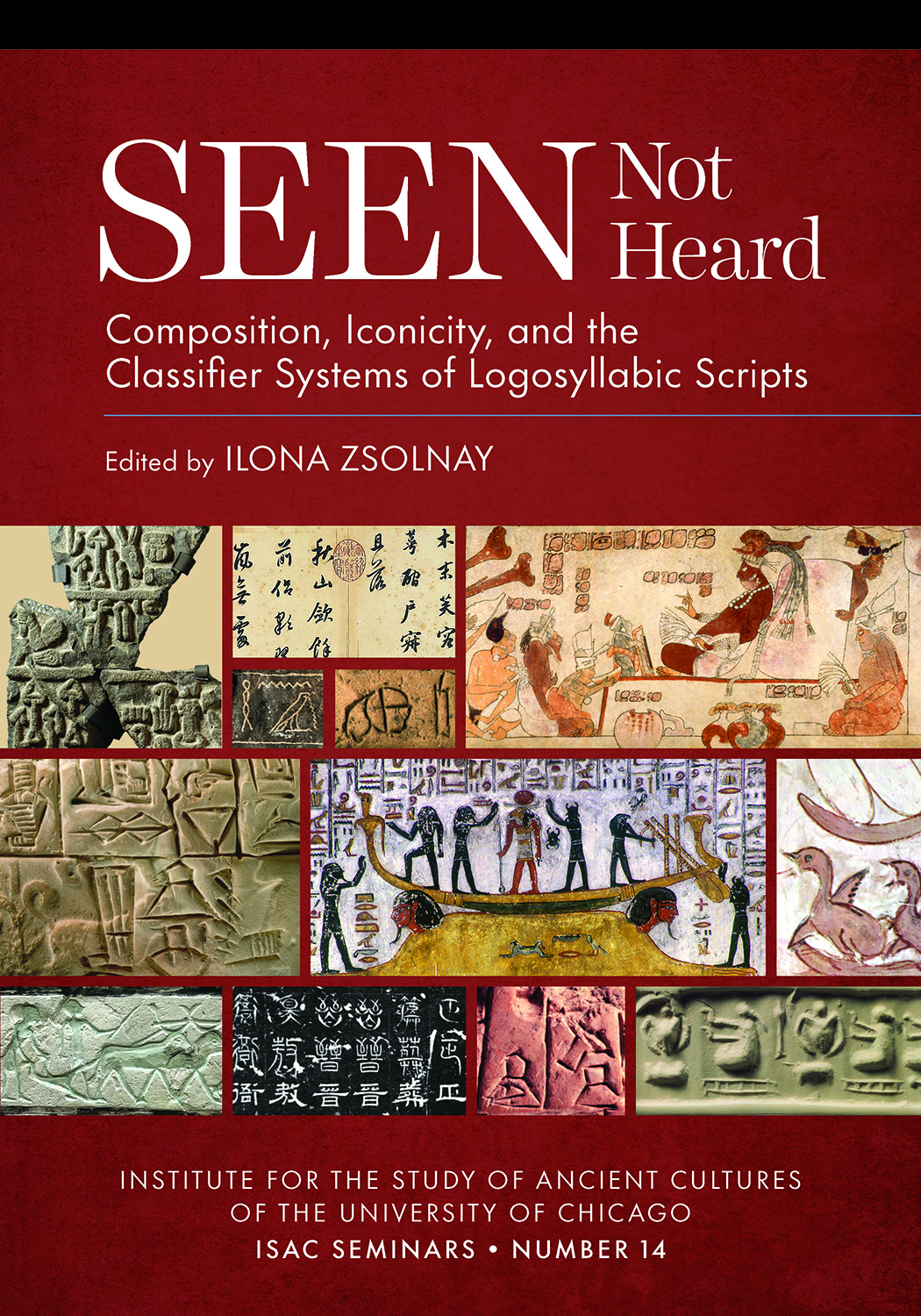ISACS 14. Seen Not Heard: Composition, Iconicity, and the Classifier Systems of Logosyllabic Scripts
Ilona Zsolnay, ed., with contributions by Diane Brentari, Claudia Brittenham, Orly Goldwasser, Zev Handel, Holly Pittman, Elisabeth Rieken, Joshua Aaron Roberson, Gebhard J. Selz, Andréas Stauder, Ilya Yakubovich, and Ilona Zsolnay; and response by Wang Haicheng
Purchase Download Terms of Use
Traditionally, writing—a graphic, multidimensional form of communication—has been approached as a vehicle for representing, and therefore conveying, the spoken word. Moving beyond this manner of analysis, this volume interrogates writing as a medium that is not simply a handmaiden to oral and aural exchange but a communication system that is richly layered and experienced. To exploit this aspect of visual code, scholars from the fields of Egyptology, Sinology, Hittitology, and Assyriology, together with Mesoamericanists, art historians, and a sign language specialist, are brought together in this volume. In its pages, these contributors incorporate into their analyses methods more commonly used in linguistics and semiotics, communication studies, art historical analysis, and traditional philology to new ends in order to form original trajectories of inquiry. Each contribution either lays bare explicit exploitation of visuality in scribal production as a means to cement power, reveal the mystical, induce humor, or expose clandestine views or it locates implicit knowledge schemes and cultural maps underlying and informing these same productions. The pioneering investigations presented in Seen Not Heard reveal that although writing may be heard, the fact that it can also be seen affects its reception and therefore the meaning of any transported phonological units.
Contents:
Preface and Acknowledgments
Introduction. Ilona Zsolnay
Part I: Experiential Writing
1. Text in Context: Relief and Hierarchy on Piedras Negras Panel 3. Claudia Brittenham
2. The Iconicity of the Vertical: Hieroglyphic Encoding and the Akhet in Royal Burial Chambers of Egypt's New Kingdom. Joshua Aaron Roberson
3. For the Eye Only: Aspects of the Visual Text in Ancient Egypt. Andréas Stauder
Part II: Classifiers
4. Animal Categorization in Mesopotamia and the Origins of Natural Philosophy. Gebhard J. Selz
5. Was There an "Animal" in Ancient Egypt? Studies in Lexica and Classifier Systems, with a Glimpse toward Sumer and Ancient China. Orly Goldwasser
6. The Cognitive Role of Semantic Classifiers in Modern Chinese Writing as Reflected in Neogram Creation. Zev Handel
7. Iconic and Grammatical Dimensions of Sign Language Classifiers. Diane Brentari
Part III: Script Evolutions
8. Encounters between Scripts in Bronze Age Asia Minor. Elisabeth Rieken and Ilya Yakubovich
9. Iconicity, Composition, and Semantics: A Structural Investigation of Pictures in an Early Writing Environment. Holly Pittman
10. Ava and ABb, a Memoir—or, The Curious Case of Niĝin/Nanše Signification. Ilona Zsolnay
Part IV: Response
11. On the Visual Presentation of Writing. Wang Haicheng
- Chicago: Institute for the Study of Ancient Cultures, 2023
- ISBN 978-1-61491-085-5
- Pp. xxii + 328; 99 figures, 11 tables
- ISAC Seminars 14
- $39.95


